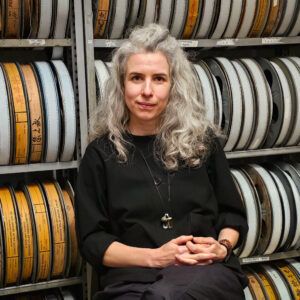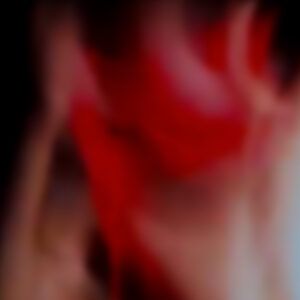Ojoboca about The Hot and the Cold: Invoking the Communal Experience
Where does come from your interest in phantasmagorias? Can you tell us a bit more about Étienne-Gaspard Robert and how his work relates to yours?
We were reading about pre-cinematic forms and the different types of magic lantern shows that were developed before the motion picture camera and projector were invented. One of those shows was the Phantasmagoria. Etienne-Gaspard Robert created his own in the late 18th century and was one of the most popular exponents of the form. His shows were interesting to us because they sound like a distant relative of the form that we now call expanded cinema. His methods in particular, at least how they are described, struck a chord with us. However, we didn’t have any interest in replicating exactly his kind of show. We wanted more to build a kind of sympathetic bridge between that type of show and our own. So our relationship is more one of acknowledging an ancestor. There is plenty of information online about Robert out there and we would encourage people to seek it out. It would not be fair to try to condense it into a few sentences here.
For those who don’t know what is a water bear, can you describe it? How did you decide to incorporate this strange organism in your performance, and to include this sort of pseudo-scientific story?
A water bear is a nearly microscopic, eight-legged, water-dwelling animal. Also called a tardigrade (meaning slow walker) it is known for its capacity to survive in extreme conditions. Under environmental stress, water bears undergo a death-like process known as cryptobiosis, in which they slow down their metabolic process to a near standstill. When conditions improve they are able to restart their metabolism. This process allows them to survive in almost any environmental condition including the vacuum of space. What was interesting to us was to think that one of the strongest organisms on the planet is everywhere around us. We just had to go to the patch of trees next to the sidewalk in front of our apartment to find some of these creatures. Most likely, in a thousand years neither the apartment, the sidewalk nor the trees will be there but the tardigrades will still be there moving slowly in tiny water puddles or waiting in cryptobiosis for conditions to change.
How did you start to develop the mise en escene for the performance? How is your work process?
The process starts with an object or an image or a text, usually found but not always. In this case, it started with stereoscopic images we found in a bookstore in London, Ontario. We bought a big pile and spent about a year trying to think of something to do with them. Then we read about the Phantasmagoria and slowly the thing started to take shape. It’s a process of having an idea for a way of manipulating or creating an image or a sound and then testing it out in a space and seeing whether it works or not. There’s nothing very special about it other than when we try putting together a set of images we’ve worked on with sounds and it suddenly works and then it feels like you’ve been given a gift. Most of the time though, it doesn’t work and you keep trying or put it aside and wait.
Your work seems to relate to the idea of truth and its conventions in cinema (at least based on what I’ve seen so far), and to play with the (supposedly) historic or “found” materials. Can you elaborate on this?
We are not really interested in truth as a concept or in fiction as its opposite. We’re more interested in working towards creating a certain kind of experience for the people that are in the space with us. The ritual of projected light is our main focus so we put our effort into trying to find ways of making it effective in an experiential sense. We feel that many of us have become so accustomed to consuming images that it can be difficult to present images in a way that can move past the emotional and corporeal complacency of our typical responses. So we like looking at these historical remnants for some clues as to what can be done in the present to break that comfort in a way that feels shared and earned. But we don’t want to recreate any experience from the past. Like we said, we weren’t there so it would not make sense for us to attempt to copy it. So we try to find ways, in the present moment, of creating our own form of communal experience. The stories help us get closer to the conditions we would like for something to happen between those of us that are in the room when the light is projected.






